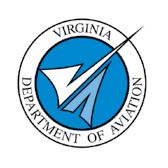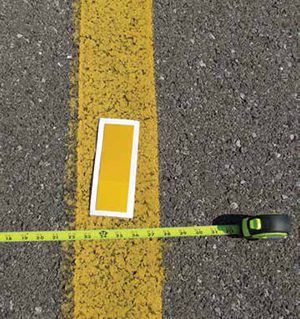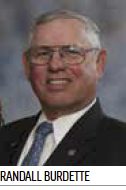Armed with magnifying glasses and kneepads, crews spent the fall of 2014 examining the pavement and paint on every airfield at every public airport in Virginia. In total, they surveyed 62 commercial and general aviation facilities. As a result, airport operators and state officials now have a concrete plan to improve the safety and longevity of their runways, taxiways and aprons.
The Virginia Department of Aviation, which sponsored the study, learned that collectively, it will cost nearly $252 million to maintain the state’s airfields during the next seven years. In comparison, the estimated price tag for markings maintenance over the same period was pegged at $4.4 million, but it only covers the 56 general aviation airports that were surveyed.
Total cost for the assessments and improvement/maintenance plans they inspired was $625,000. According to Virginia aviation officials, the project was a nationwide first. No other state aviation agency has surveyed the condition of pavement and markings at all of its public airfields.
 FACTS&FIGURES Project: Statewide Pavement & Airfield Markings Study Location: Virginia Scope: 62 Airports (6 Commercial; 56 General Aviation) Cost: $625,000 Primary Contractor/Pavement Study: All About Pavements Subcontractor/Markings Study: Sightline Of Note: First statewide airfield pavement & markings assessment in the U.S. |
All About Pavement, from Mahomet, IL, was the primary contractor for the study and performed the pavement analysis. Virginia-based Sightline analyzed airfield markings as a subcontractor.

While pavement assessments have been part of previous surveys, an assessment of airfield markings had never been undertaken on a systematic, statewide basis anywhere in the United States, according to state and industry sources. In general, markings have received more attention since 2008, when the FAA published a handbook addressing the topic. Sightline President Donna Speidel served as the principal investigator on the team that developed the handbook. Since then, Sightline has assessed and designed markings programs at four of the top five U.S. airports. In some cases, the airports acted proactively; in others, they responded to FAA orders.
Regardless of the catalyst, Sightline focuses on evaluating the effectiveness of an airport’s current markings, and then determines when markings need to be maintained and how they should be refreshed. Speidel’s rule of thumb: Paint less, clean more.
The state included Virginia’s 56 general aviation facilities in the markings survey to improve each airport’s safety and operations capability, notes Randall Burdette, executive director of the Virginia Department of Aviation. Survey results presented to the agency last fall indicate that the state’s general aviation airports are generally in the “low good range” with a composite score in the low 50s on a 100-point scale.

“The markings results were enlightening,” Burdette observes. “We found [that] several general aviation airports were in good condition, with many only requiring cleaning due to the growth of fungus. We did find a few where new markings would enhance the pilot’s ability to see the runway in low lights conditions.”
 In addition to assessing current conditions and providing cost estimates for ongoing maintenance, the report recommended coordinating certain projects-for instance, to ensure that fresh markings are not applied before new overlays are installed. In some cases, asphalt concrete preservation was recommended to repair airfield surfaces while the pavement is still in good condition, thereby extending the airfield asset’s lifecycle. Based on the condition of markings, airport engineers will decide if preservation treatment should be applied around markings, or markings should also be repaired while the treatment is applied.
In addition to assessing current conditions and providing cost estimates for ongoing maintenance, the report recommended coordinating certain projects-for instance, to ensure that fresh markings are not applied before new overlays are installed. In some cases, asphalt concrete preservation was recommended to repair airfield surfaces while the pavement is still in good condition, thereby extending the airfield asset’s lifecycle. Based on the condition of markings, airport engineers will decide if preservation treatment should be applied around markings, or markings should also be repaired while the treatment is applied.
The aviation department plans to use survey results to help each airport update its seven-year plan for maintaining pavement and airfield markings, says Burdette. The report will also be used to request state and federal funding.
General aviation airports will need to fund 20% of their marking improvement projects, Speidel notes. The state provides the rest of the funds.
Study Prelude
State aviation officials weren’t enthusiastic when Sightline approached them in 2009 about a statewide airfield assessment. In fact, their initial reaction was “Why?”.
The department had not heard from facility operators about problems with markings, and officials were hesitant to spend the money, explains Speidel. They did, however, test the concept and process by funding 80% of a markings study at Manassas Regional Airport (HEF), the state’s third-busiest general aviation airport.
The findings were eye-opening, recalls HEF Operations Officer Richard Allabaugh. “We had not looked at markings that way before,” he comments. “We are trained to look at various areas of the airfield and only on some aspects of airfield markings. We got an education to look at reflectivity as well as the durability of our markings.”

Last year, HEF logged nearly 79,000 operations and was home to more than 400 based aircraft. Because the airport is located in a flood plain, the high water table deteriorates its markings, explains Allabaugh. Some had even seeped into the asphalt. Snowplowing also reduces the longevity of HEF’s markings, he adds.
Using new product specifications, Sightline recommended a thicker Type 3 paint that includes rust and algae inhibitors and is designed to last longer than previous formulas.
Crews applied the new paint in 2011, and three years later, the condition of all markings at HEF had improved. Airport officials were so pleased with the results that they expanded the scope of a runway expansion project during the second year of the markings study and restriped the whole runway with Type 3 paint.
Improvements at HEF convinced state officials about the potential value for other airports, and the Department of Aviation incorporated markings evaluation into its statewide assessment program. Federal funds paid for 90% of the pavement testing and state funds covered 100% of the cost for markings evaluations.
Marked Differences
To assess the condition of existing markings, Sightline crews measured nine different attributes at various points on each runway, taxiway and apron. At times, they crawled on their hands and knees, using magnifying glasses to inspect tiny glass beads.
The scoring system includes numeric ratings of 0 to 100, with corresponding descriptions of poor, fair, good and excellent. Ratings express performance in three keys areas: durability/paint adherence; visibility, which includes reflectivity and color; and compliance with FAA requirement for dimensions and alignment. Information is aggregated, but separate scores are developed for each runway, taxiway and apron.
Many airport operators simply don’t think about airfield markings, Speidel remarks. Most treat airfield markings as if they are highway striping. “This is how it’s always been done,” she laments. “For the last 15 years, we have been working to change the culture and mindset to understand what fits highways doesn’t fit airports.”
If paint is applied correctly, markings that are properly cleaned with low-pressure power washers can last five to seven years, says Speidel. Putting new paint on top of peeling paint is a “waste of time” because the new paint new will also peel, she emphasizes.
While centerlines typically represent just 10% of an airfield’s markings, it is common for airports to repaint all markings when repainting the centerlines. “Everything does not need to be painted as frequently,” Speidel advises.
Airfield markings are especially critical at general aviation airports without lights, she adds. Although most of Virginia’s general aviation airports have runway lights on both sides of the runways, high-visibility markings are still important for safe nighttime navigation. Given the limited lighting at many general aviation airports, Speidel notes that they can often benefit more from higher quality materials than commercial airports.


